RISING STORM - THE IMPERIAL JAPANESE NAVY AND
CHINA
1931-1941
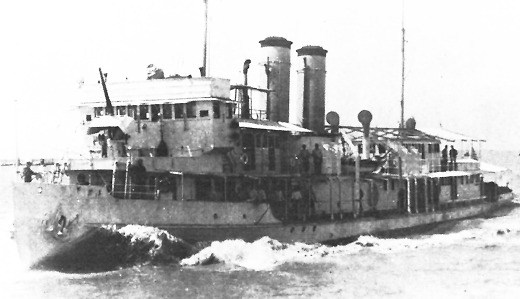 USS PANAY patrolling the Yangtze
USS PANAY patrolling the Yangtze
The "China Incident" (USS PANAY) – 1937
© 2012 Bob Hackett, Sander Kingsepp and Anthony Tully
20 November 1937:
The Chinese Nationalist government announces the relocation of their government from their provisional capital at Nanking to Hankow.
21 November 1937:
As Japanese forces encirles Nanking, Chiang Kai-shek's foreign office notifies the American Embassy that it must prepare to evacuate.
22 November 1937:
American Ambassador Nelson T. Johnson and most American Embassy personnel depart Nanking for Chungking 1,500 miles upriver in gunboat USS LUZON (PR-7)(later IJN KARATSU). LtCdr (later Cdr) James J. Hughes (USNA '15) river gunboat USS PANAY (PR-5) is assigned as station ship to guard the remaining Americans. The rest of the embassy staff stays another week, then decides to depart in PANAY.
24 November 1937:
Hankow. River gunboat USS GUAM (PG-43)(later renamed USS WAKE (PR-3) then IJN TATARA) arrives at Hankow to protect the lives and property of American nationals.
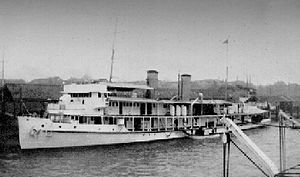
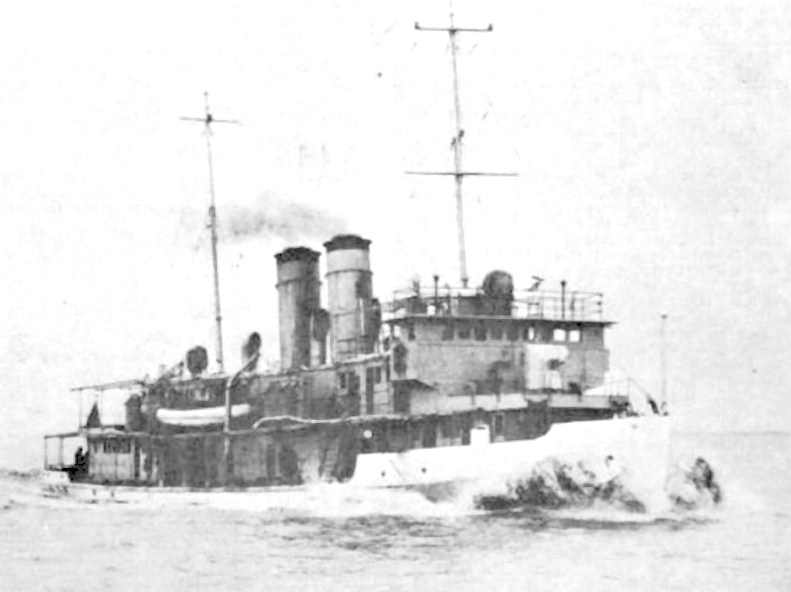 USS LUZON (Left) and USS GUAM (Right).
USS LUZON (Left) and USS GUAM (Right).
1 December 1937:
Tokyo. American Ambassador Joseph C. Grew notifies the Japanese government of the evacuation of the United States Embassy staff at Nanking.
December 1937:
Yangtze. As the Japanese close on Wuhu, GUAM takes part in the transfer of Americans to Hankow. [1]
9 December 1937:
Nanking. An IJA artillery shell falls about 200 feet from PANAY in the harbor. LtCdr Hughes moves PANAY upriver and ties up next to an oil terminal and notifies the Japanese of her new position.
11 December 1937:
The commander of the IJA 10th Army orders the 18th Division to fire on ships on the Yangtze River that pass near Wuhu regardless of their nationality.
PANAY embarks the last four embassy staff, a number of American and Italian journalists and some escaping Chinese nationals. With IJA artillery shells again falling near, PANAY forms a convoy with Standard Oil (Socony Vacuum Oil Company) river barges MEI PING (1,118 gt), MEI HSIA (1,048 gt) and MEI AN (934 gt) that are evacuating families of Standard Oil's employees and agents from Nanking. British gunboats and a few other British craft also follow the same course and move seven miles upriver.
For two miles PANAY's convoy is repeatedly fired upon by an IJA 13th (Heavy) Field Battery commanded by recalled IJA Reserve Colonel of Artillery Hashimoto Kingoro. who privately seeks to provoke the United States into war. British gunboats HMS LADYBIRD and HMS BEE also came under fire from the IJA artillery unit near Wuhu on the Yangtze. LADYBIRD is hit by six shells. One British sailor is killed and four wounded. HMS BEE evades a shell. [2]
12 December 1937:
In the morning, LtCdr (later Captain) Aoki Takeshi (51), IJN liaison officer at the Central China Area Army (CCAA) HQ, informs Rear Admiral Mitsunami Teizo's (37)(former CO of KAGA) Second Combined Air Group that the CCAA has requested anti-shipping strikes against about 10 ships heading up the Yangtze River from Nanjing. The Army also adds that it will award a citation if the mission is accomplished. IJAAF aircraft in the area are tied up supporting IJA troops and anti-shipping sorties are not their specialty. The Imperial Army, as usual, is reluctant to ask assistence from their Navy rival, but intelligence suggests that among the Chinese vessels retreating from Nanking are two tankers, carrying avgas for the Chinese Air Forces, as well as other vessels transporting retreating Chinese Army troops.
Yangtze. 27 miles N of Nanking. At about 1100, PANAY anchors near Hoshien. She displays several large American flags sewn onto the upper deck canvas awnings and a 6 x 11 foot United States flag flys from the mast. The day is clear, sunny with visibility unlimited and the waters still. An embassy staff officer notifies the American consulates in Shanghai, Hankow and Peking of PANAY's position and requests the information be forwarded to the Japanese.
Around noon, Aoki makes another call to Second Combined Air Group HQ to alert them of the sighting of ten Chinese vessels of various size and numerous junks about 12-25 miles upstream from Nanking. Captain (later Rear Admiral) Miki Morihiko (40), leading the 12th Naval Air Group, is tasked with organizing the strikes from Changzhou (Changchow) airfield on the southern bank of the Yangtze River between Shanghai and Nanjing, For the first sweep, he includes nine Aichi D1A2 Type 94 (“Susie“) carrier dive-bombers dive-bombers and three Yokosuka B4Y1 Type 96 (“Jean“) carrier torpedo bombers (all carrying bombs) from the 13th NAG stationed on the same airfield.
Many 13th NAG bomber pilots are recent arrivals and for them this is their first combat mission. None of the planes carries a radio and in-flight communication is limited to flares and hand signals. Lt Murata Shigeharu’s flight of torpedo bombers takes off first, followed by the rest of the planes, proceeding in a long gaggle.
The first strike discovers a group of four ships in the area 26 nm upstream of Nanking. Two of them are identified as oil tankers. Upon sighting the IJNAF aircraft, the ships openfire. At about 1340, Lt Murata’s flight of three B4Y1 Type 96 bi-plane bombers flight immediately commences a level attack from 8,200 ft (2500 m) altitude. At least one direct hit is observed, but most bombs miss. Lt (later Cdr) Okumiya Masatake (58) and Lt (later Cdr) Komaki Ichiro’s (57) dive-bombers attack next from 13,100 ft (4,000 m) altitude, strafing their targets to suppress flak. Finally, Lt Shioda Ryohei’s nine IJN Nakajima A4N Type 95 bi-plane fighters drop 18 bombs on PANAY (PR-5) and also strafe the gunboat.
PANAY is hit by two bombs, one of which disables her forward 3-inch gun and wounds LtCdr Hughes. PANAY's crew fight back with their two .30-cal. Lewis machine guns, but, designed for use against shore and water targets, they cannot elevate enough for effective AA fire. The planes also bomb and destroy the three Standard Oil barges. The captain of MEI AN and many Chinese civilian passengers are killed. An IJA barge opens fire on PANAY with small arms in an attempt to kill anyone onboard. IJA soldiers then board the sinking ship and soon leave.
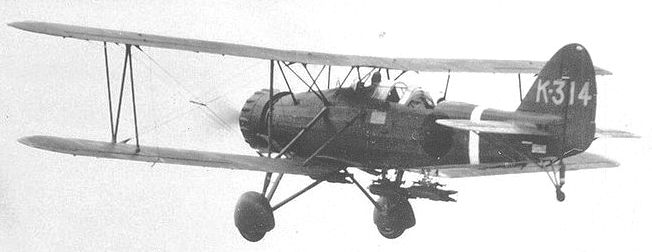
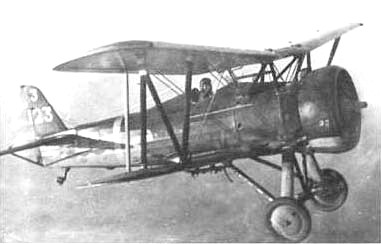 IJN Yokosuka B4Y1 Type-96 and a Nakajima A4N1 Type-95
IJN Yokosuka B4Y1 Type-96 and a Nakajima A4N1 Type-95
By 1400, all power and propulsion are lost and PANAY's main deck is awash and she begins to settle by the bow and lists to starboard. Captain Hughes sees his ship is going down. Severely wounded in the hip, he orders his executive officer LT (later Cdr) Arthur Anders (USNA '27) to abandon ship. Anders, wounded in the hands and throat, is unable to speak, so at 1402, he writes the order in blood and pencil. PANAY has no lifeboats, only two motor launches. They are launched carrying the wounded and civilians. Japanese fighters machine-gun the launches on their way to shore at nearby Hanshan Island. [3]
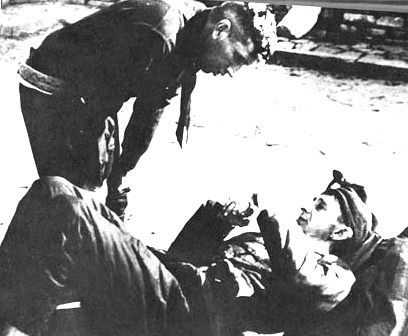 LT Anders Wounded in the Attack on USS PANAY
LT Anders Wounded in the Attack on USS PANAY
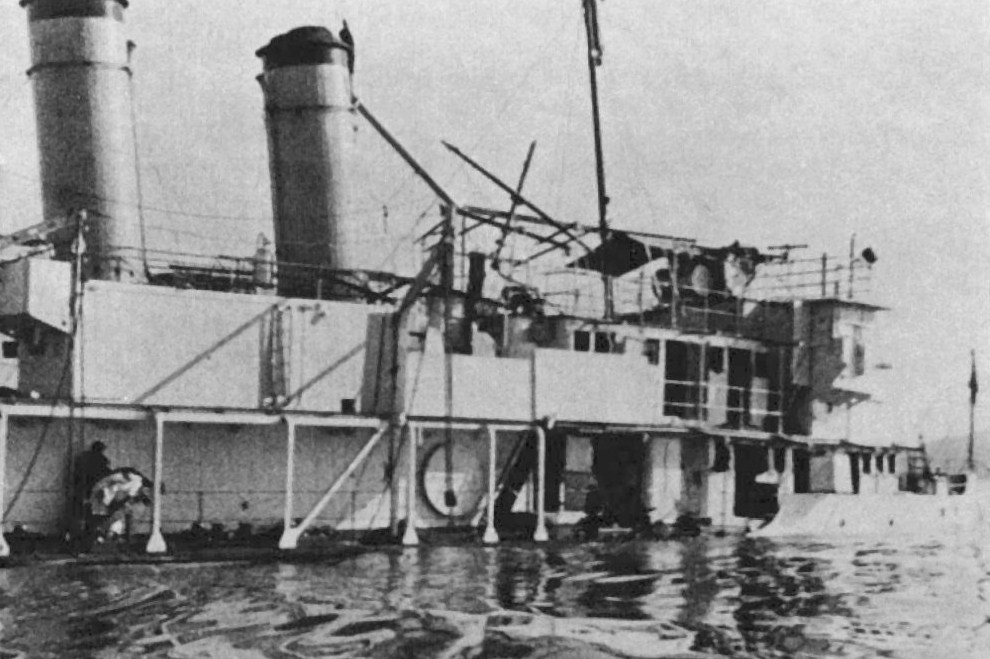 USS PANAY with decks awash and sinking
USS PANAY with decks awash and sinking
At 1552, PANAY sinks. Two sailors and one Italian journalist are killed and 43 sailors and five civilians wounded in the Japanese action against USS PANAY.
Lt Okumiya’s D1A2s land and are hastily refueled and rearmed. Upon returning to their airfield the pilots report two oilers sunk and two other vessels damaged. They also confirm that a follow-up attack is necessary. Okumiya leads the second attack in the target area, claiming new hits and sinking of an already crippled Chinese vessel. He then leads his two flights towards Nanking.
Yangtze. Ten miles from Nanking. A group of three vessels is sighted including British gunboats HMS SCARAB and HMS CRICKET. Okumiya gives the signal to attack, but then spots a British flag on one of the targets. He fires a flare that orders the attack aborted. By that time, two D1A2s have dropped their bombs, but all miss. The other three DIA2s abandon the attack. After a fruitless search for new targets Okumiya's dive-bombers return to Changzhou.
14 December 1937:
Gunboats USS OAHU (PR-6) and HMS BEE search for PANAY's survivors. BEE takes aboard 22 including the Norwegian captain of MEI HSIA and the Estonian captain of MEI PING.
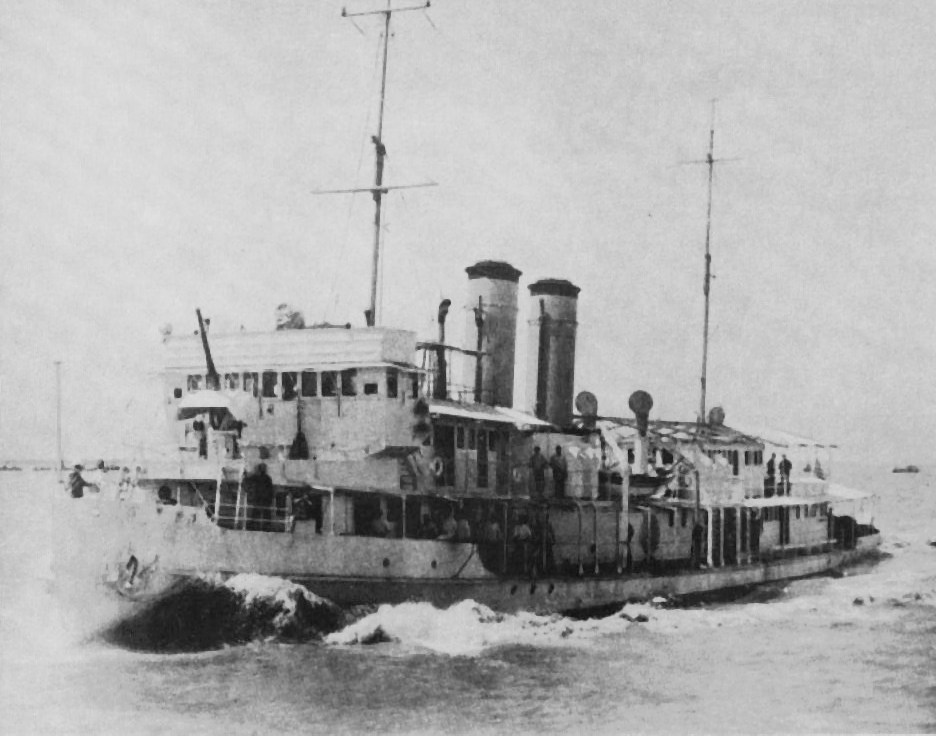
 USS OAHU (Left) and HMS BEE (Right).
USS OAHU (Left) and HMS BEE (Right).
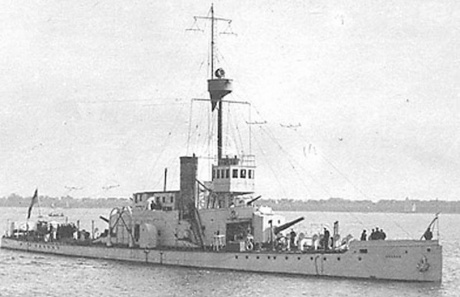
 HMS SCARAB (Left) and HMS CRICKET (Right).
HMS SCARAB (Left) and HMS CRICKET (Right).
Tokyo. American Ambassador Joseph C. Grew lodges a formal protest about the USS PANAY "Incident". The Japanese government accepts responsibility, but claims the attack was unintentional. [4]
London. British Foreign Minister (later Prime Minister) Anothony Eden lodges a strong formal protest with Japan's Minister of Foreign Affairs about the attack on the British gunboats. Eden then reports to the House of Commons.
Japan's Foreign Minister Hirota Koki immediately claims the bombings were made because of mistaken identification of the ship's nationalities. He apologizes, promises compensation and guarantees there will be no similar attacks. [5]
15 December 1937:
Two IJN Kawanishi H6K flying-boats carrying doctors, nurses and food arrive at Hoshien. The condition of the refugees is reported to be bad due to the cold and the continual shelling of the river banks.
USS OAHU reports the Japanese have promised safe passage to warships conveying the survivors and dead of PANAY and the three oil tankers to Shanghai. An IJN officer sends mine sweepers ahead. The Japanese also promise to hold up the attack against Hoshien until the survivors are evacuated. Later, the survivors are transferred to LADYBIRD which came up from Wuhu. LADYBIRD then goes back to Shanghai for repairs accompanied by OAHU and lands the survivors at Shanghai.
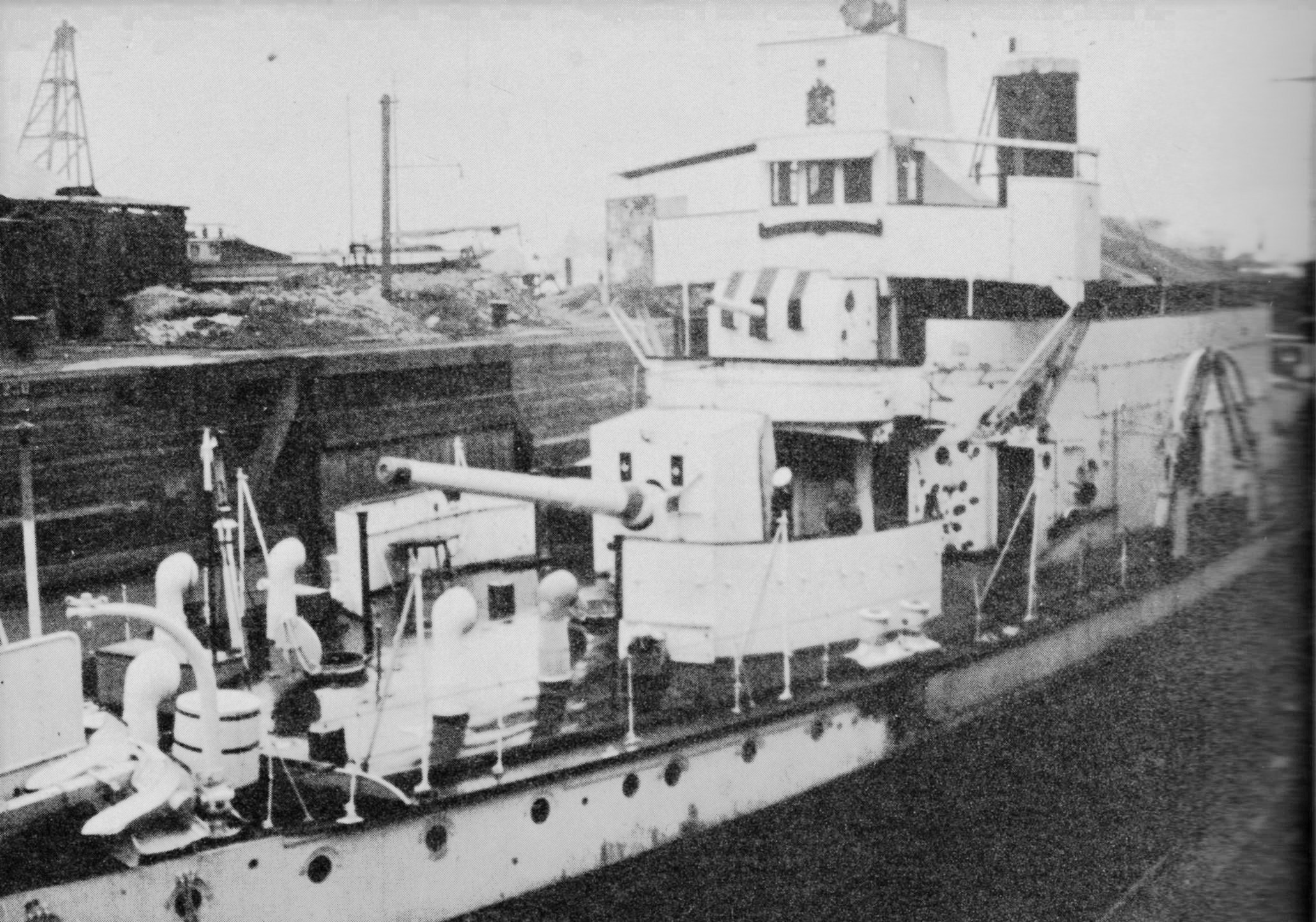 Damaged HMS LADYBIRD in Shanghai Drydock after Japanese Shelling
Damaged HMS LADYBIRD in Shanghai Drydock after Japanese Shelling
24 December 1937:
Shanghai. A formal apology for the "China Incident" is delivered by Rear Admiral (later Vice Admiral) Sugiyama Rokuzo (38), (former CO of HYUGA), Chief of Staff, China Area Fleet to Admiral Harry E. Yarnell (USNA 1897)(former CO of SARATOGA, CV-3), CINC, United States Asiatic Fleet, aboard his flagship USS AUGUSTA (CA-31).
December 1937:
Tokyo. Deputy Navy Minister Admiral (Fleet Admiral, posthumously) Isoroku Yamamoto (former CO of AKAGI) (32), visits the United States Embassy to explain and apologize, but Ambassador Grew rejects the apology based on evidence that PANAY and the other ships had been raked by machine-gun fire from shore. The IJN had learned that an IJA boat machine-gunned boats from PANAY and the Standard Oil tankers and that before the shooting, the IJA boat visited PANAY and knew of its nationality. Only after Yamamoto explains that "either that the commander of the army boat did not report the attack to army headquarters or that the headquarters hid it", does Ambassador Grew accept Japan's apology.
Authors' Notes:
[1] On 8 Dec '41 at Shanghai. USS WAKE (ex-GUAM) is rigged to be to scuttled with demolition charges, but about 0400, some two hours after the Pearl Harbor attack, WAKE is boarded and seized by Japanese Special Naval Landing Force troops. Surprised and overwhelmed, WAKE's crew is taken as prisoners of war before they can scuttle the ship. WAKE is the only USN warship to surrender in WW II.
[2] One source claims that Colonel Hashimoto, a friend and ally of General (later Prime Minister) Tojo Hideki, sought to provoke the United States into war and that the IJA barge that opened fire on PANAY was also under his command. Postwar, Hashimoto is tried by the International Military Tribunal Far East (IMTFE) for war crimes unrelated to the "China Incident" and sentenced to life imprisonment, but later released on parole and died in June 1957.
[3] LT Anders was the father of Apollo 8 astronaut MajGen, USAFR (Ret), William A. Anders (USNA '55).
[4] The United States, politically divided and still economically distressed by the "Great Depression", is unprepared militarily. The Roosevelt Administration, anxious to avoid war, accepts the Japanese explanation. At the time, most Americans favor a policy of complete withdrawal from China -- Asiatic Fleet, Marines, missionaries and medical missions.
[5] In April '38, Japan pays an indemnity of $2,214,007.
The indemnity is intended to cover the loss of PANAY and five Standard Oil vessels, damage to two other Standard Oil vessels, and the deaths of three people (two from PANAY) and injuries to 74.
-Bob Hackett, Sander Kingsepp and Anthony Tully
Back to Rising Storm
Page
















